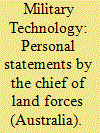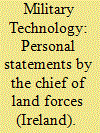| Srl | Item |
| 1 |
ID:
176773


|
|
|
|
|
| Summary/Abstract |
The rapid increase in anthropogenic carbon dioxide (CO2) emissions in recent decades is a major concern because CO2 emissions are the main precursor of global warming. Thus, a clear understanding of the factors behind this increase is crucial for the design of policies that limit or at least stabilize global concentrations of CO2. In this study, we investigate factors driving the growth in global CO2 emissions over the last two decades (between 1997 and 2015) using the logarithmic mean Divisia index (LMDI) method. The analysis shows that economic growth is the main driver of CO2 emissions during the 1997–2015 period. Population growth is also responsible for increased CO2 emissions, mainly in low-income countries. Without lowering energy intensity and increasing the deployment of clean and renewable energy, CO2 emissions during 1997–2015 would have been almost 50% higher than the observed level. The analysis also shows that the factors driving CO2 emission growth vary among countries from different per-capita income brackets. The analysis emphasizes the need to reduce CO2 more rapidly in highly industrialized countries and to continue to support reduction of CO2 in developing countries, per the United Nations Framework Convention on Climate Change (1992) Common But Differentiated Resposibilities.
|
|
|
|
|
|
|
|
|
|
|
|
|
|
|
|
| 2 |
ID:
122706


|
|
|
|
|
| Publication |
2012.
|
| Summary/Abstract |
The chief of land forces (Australia) in the member of representative counties detail the reform processes through which their services are adapting their respective structures, equipment and doctrines to the new requirements of our times.
The Army after Afghanistan
Training team 9 provide finishing touch for Iraqi army: Australian Army training team Iraq 9 have almost finished their mission of training and mentoring the Iraqi army for their transition to self reliance's.
|
|
|
|
|
|
|
|
|
|
|
|
|
|
|
|
| 3 |
ID:
122702


|
|
|
|
|
| Publication |
2012.
|
| Summary/Abstract |
The chief of land forces (Ireland) in the member of representative counties detail the reform processes through which their services are adapting their respective structures, equipment and doctrines to the new requirements of our times.
The Army as the Driving Forces Behind the Defence Forces Overseas Developments
The Irish Defence Forces Taking Most Demanding Operations: Lt. Gen., Sean McCann, Chief of Staff Defence Forces, Ireland
|
|
|
|
|
|
|
|
|
|
|
|
|
|
|
|
| 4 |
ID:
122703


|
|
|
|
|
| Publication |
2012.
|
| Summary/Abstract |
The chief of land forces (Italy) in the member of representative counties detail the reform processes through which their services are adapting their respective structures, equipment and doctrines to the new requirements of our times.
The Italian Army-Playing an Important role in International Operations
|
|
|
|
|
|
|
|
|
|
|
|
|
|
|
|
| 5 |
ID:
122704


|
|
|
|
|
| Publication |
2012.
|
| Summary/Abstract |
The chief of land forces (Latvia) in the member of representative counties detail the reform processes through which their services are adapting their respective structures, equipment and doctrines to the new requirements of our times.
Land forces Brigade of Latvia
|
|
|
|
|
|
|
|
|
|
|
|
|
|
|
|
| 6 |
ID:
122705


|
|
|
|
|
| Publication |
2012.
|
| Summary/Abstract |
The chief of land forces (Norway) in the member of representative counties detail the reform processes through which their services are adapting their respective structures, equipment and doctrines to the new requirements of our times.
Norwegian Army 2012, Status and the Future
|
|
|
|
|
|
|
|
|
|
|
|
|
|
|
|
| 7 |
ID:
122707


|
|
|
|
|
| Publication |
2012.
|
| Summary/Abstract |
The chief of land forces (Poland) in the member of representative counties detail the reform processes through which their services are adapting their respective structures, equipment and doctrines to the new requirements of our times.
Land Forces of the Republic of Poland 2012.
|
|
|
|
|
|
|
|
|
|
|
|
|
|
|
|
| 8 |
ID:
122708


|
|
|
|
|
| Publication |
2012.
|
| Summary/Abstract |
The chief of land forces (Portugal) in the member of representative counties detail the reform processes through which their services are adapting their respective structures, equipment and doctrines to the new requirements of our times.
The Portuguese Army Current Challenges
|
|
|
|
|
|
|
|
|
|
|
|
|
|
|
|
| 9 |
ID:
181795


|
|
|
|
|
| Summary/Abstract |
To formulate efficient emission reduction policies, we explore the driving forces of CO2 emissions from the transport sector of four municipalities in China during 2000–2017 based on the temporal-spatial decomposition analysis model. The key factors causing the differences in CO2 emissions will be investigated in important years (i.e., 2000, 2005, 2010, and 2017). Two main results are found: (1) Energy intensity, as well as transportation intensity, is the dominant restraining factor confronting the transport sector’s CO2 emissions, while the income effect is reversed. (2) The results of the analysis further show what drives different emission levels (e.g., income effect, energy structure, and transportation structure) and four municipalities have greater potential in the reduction of CO2 emissions. We further discuss the root causes of the spatial-temporal differences in carbon emissions in the transport sector and analyse their future trends in detail. Based on this, we propose to pay attention to strengthen coordinated emission reduction, optimize the transportation mode, adjust the energy consumption structure, and select emission reduction strategies according to local conditions. In addition, emission reductions in the transportation sector are also affected by various factors such as social systems and transformation costs, and further research is needed in the future.
|
|
|
|
|
|
|
|
|
|
|
|
|
|
|
|